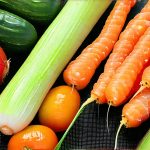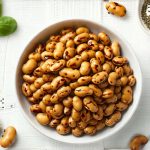Many people experience digestive discomfort when trying to incorporate incredibly nutritious foods into their diet – things like broccoli, beans, apples, even certain whole grains. It’s frustrating because these are the very foods our bodies need to thrive! Often, it’s not about eliminating these foods entirely; it’s about understanding why they cause issues and learning simple adjustments that can make them much more tolerable. This isn’t necessarily a sign of food intolerance or allergy, but rather a matter of digestive sensitivity and how we prepare and combine foods. The goal is to unlock the nutritional benefits without sacrificing comfort.
The good news is that small tweaks can often make a significant difference. We’re talking about everything from cooking methods and portion sizes to pairing strategies and even the order in which you eat your food. These aren’t drastic dietary overhauls, but rather mindful modifications designed to work with your digestive system, not against it. It requires some experimentation – what works for one person won’t necessarily work for another – but with a little patience and awareness, most people can enjoy a wider range of nutrient-dense foods without feeling unwell. This article will explore practical strategies to help you achieve that balance.
Understanding the Root Causes & Initial Steps
Digestive sensitivity isn’t always about what you eat; it’s often about how your body reacts to it. Several factors can contribute, including insufficient digestive enzymes, gut microbiome imbalances, stress levels, and even how quickly you consume food. Highly nutritious foods are sometimes harder to digest simply because they contain more fiber, natural compounds (like glucosinolates in cruciferous vegetables), or fats. These aren’t inherently bad – quite the opposite! – but they can require a bit more digestive effort.
- Bloating and gas often result from undigested carbohydrates fermenting in the gut.
- Diarrhea can be caused by rapid transit time through the digestive system, or sensitivity to specific compounds.
- Constipation may occur if fiber intake is increased too rapidly without adequate hydration.
The initial step isn’t necessarily cutting out foods, but rather assessing your baseline. Keep a food diary for a week or two, noting what you eat, when, and any associated symptoms. This helps identify potential trigger foods or patterns. Simultaneously, focus on foundational habits: staying well-hydrated (water is crucial!), managing stress through techniques like deep breathing or yoga, and ensuring adequate sleep. These seemingly unrelated factors significantly impact digestive health. Don’t underestimate the power of mindful eating – slowing down, chewing thoroughly, and avoiding distractions during meals can dramatically improve digestion. Considering meal timing habits is also key for optimal digestion.
Modifying Preparation Methods & Food Combinations
Often, how we prepare food plays a huge role in its digestibility. For example, raw vegetables are generally harder to digest than cooked ones. Cooking breaks down cell walls, making nutrients more accessible and reducing the amount of work your digestive system has to do. Steaming or gentle sautéing are preferable to frying, as they preserve nutrients and minimize added fats that can sometimes exacerbate symptoms. Cruciferous vegetables (broccoli, cauliflower, cabbage) benefit particularly from cooking; steaming them alongside a pinch of caraway seeds can also help reduce gas production. You might find flavor profiles play a role too.
Food combinations matter too. Combining high-fiber foods with healthy fats can slow down digestion and improve nutrient absorption. For instance:
– Pairing apples with almond butter provides fiber and fat.
– Adding avocado to a salad increases satiety and aids in the absorption of fat-soluble vitamins.
– Mixing beans with rice creates a more complete protein source, but also balances out the rapid fermentation that can cause gas.
Furthermore, consider fermenting foods like sauerkraut or kimchi. Fermentation pre-digests food, breaking down complex carbohydrates and making them easier to tolerate. Introducing fermented foods gradually is important, as they can initially cause some bloating in sensitive individuals, but over time, they can support gut health and improve overall digestibility. If you struggle with frequent discomfort, exploring foods that don’t cause trouble may offer relief.
Taming the Bean Scene
Beans are nutritional powerhouses – packed with protein, fiber, and essential minerals – but notoriously associated with gas and bloating. The culprit isn’t necessarily the beans themselves, but rather complex carbohydrates called oligosaccharides that our bodies struggle to digest. Here’s how to make them more tolerable:
- Soaking: Soak dried beans for at least 8 hours (or overnight) before cooking. Discard the soaking water and rinse thoroughly. This removes some of the indigestible sugars.
- Sprouting: Even better than soaking is sprouting! Sprouting further breaks down these complex carbohydrates, making them even easier to digest.
- Cooking with Kombu: Adding a strip of kombu seaweed while cooking beans releases enzymes that aid in digestion. Remove the kombu before serving.
- Start Small: Begin with small portions and gradually increase your intake as your body adjusts.
Conquering Cruciferous Vegetable Challenges
Broccoli, cauliflower, kale, cabbage – these vegetables are brimming with vitamins, minerals, and cancer-fighting compounds, but also contain glucosinolates that can cause gas and bloating in sensitive individuals. The key is to modify how you prepare them:
- Cooking Method: Steaming, roasting, or stir-frying are better options than raw consumption.
- Pairing with Caraway/Fennel Seeds: Adding a pinch of caraway or fennel seeds while cooking can help reduce gas production. These spices contain compounds that aid in digestion.
- Chewing Thoroughly: Ensure you chew these vegetables thoroughly to begin the digestive process and release their nutrients.
Apple & Pear Sensitivity Solutions
Apples and pears are fantastic sources of fiber and antioxidants, but their high fructose content can be problematic for some people. Fructose malabsorption occurs when the small intestine has difficulty absorbing fructose, leading to bloating, gas, and diarrhea. To mitigate this:
- Choose Lower-Fructose Varieties: Green apples tend to have less fructose than red apples.
- Pair with Protein/Fat: Combine apple slices with a tablespoon of peanut butter or a handful of nuts to slow down digestion and improve fructose absorption.
- Cooked Apples: Cooking apples (e.g., in crumble or sauce) breaks down some of the fructose, making them easier to tolerate. A sprinkle of cinnamon can also aid digestion.
Ultimately, finding what works best for you is a process of experimentation and self-awareness. Don’t be afraid to modify recipes, adjust portion sizes, and listen to your body’s signals. The goal isn’t to eliminate nutrient-rich foods but to find ways to enjoy them comfortably and reap their many health benefits. Remember that consistency and patience are key – building a more comfortable relationship with food takes time and effort. If you’re seeking quick, easy options, consider light dinner ideas for sensitive stomachs. When planning meals, good kitchen arrangements can make things significantly easier. For a quick and easy snack, consider simple snacks. And if you suspect certain foods are triggering issues, it’s worth investigating foods that trigger bloating.


















